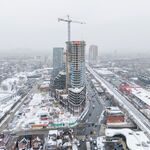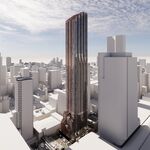smallspy
Senior Member
This is the type of study that should make people skeptical of our studies - this is nuts! - platforms maxxing out at 8 tph?!?!?!?! Assuming we rebuild the platforms to reasonable width you can easily do >10 tph per direction per track, get single level trains with more doors and you can go much higher, there is no good reason we can't get to 20 tph per track with changes to the platform design. There is not really a fundamental difference between what is possible from Subway to Regional rail with the right trains and signalling.
It's easy to throw out numbers when you seem to not realize what it actually entails.
Is 20 tph on any single track possible in Union Station as it sits now, and after all of the planned improvements? No and no. Not possible. Subway systems can do it because they use all of the same high performance rolling stock, and have engineered their fixed plant to work only with them. So long as GO trains have to mix with VIA and freights, that isn't possible.
Blow it all up and start again? Then it *might* be possible. But that's asking a lot of the fixed plant, to say nothing of the equipment.
But plans are already underway to widen them, theres no reason we can't get quite a bit faster than today, there are plenty of places they go fast in Europe with curvy platforms etc.
You realize that this isn't Europe, right? And you realize that "curvy" is an extremely relative thing.
Dan






